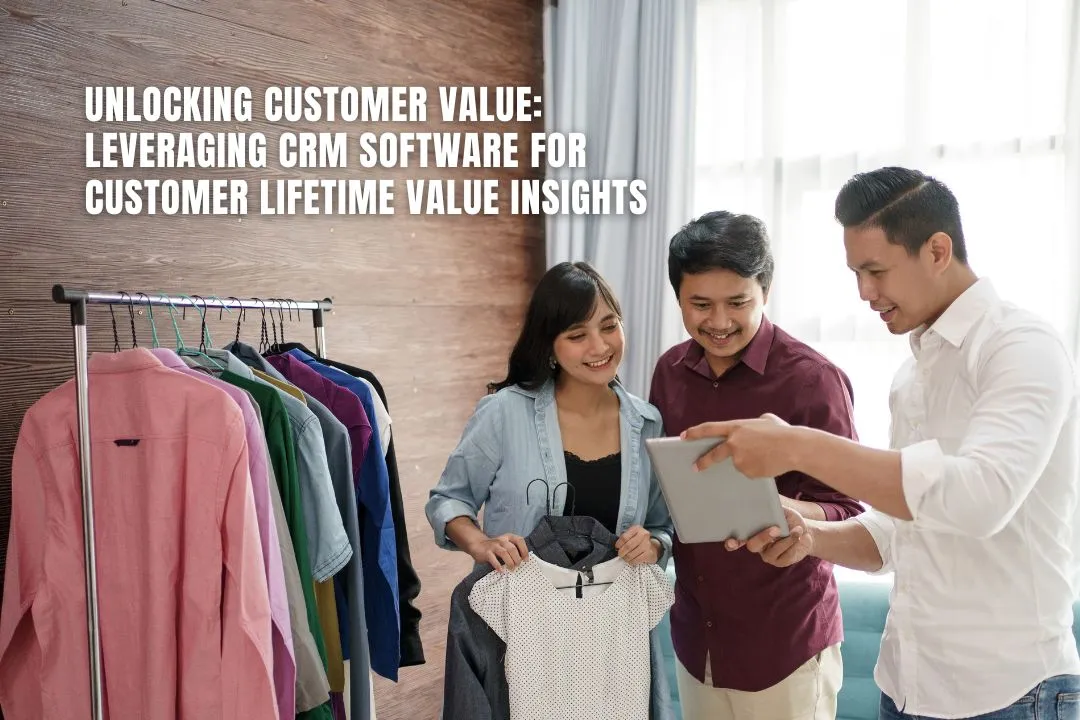October 8, 2024

In the fast-paced world of business, understanding customer lifetime value (CLV) is essential for success. CLV helps companies see the long-term worth of their customers, guiding them in making smart decisions about marketing and customer relationships. This article explores how CRM software can unlock valuable insights into CLV, leading to better customer experiences and increased profits.
Customer Lifetime Value (CLV) is a key metric that estimates the total revenue a business can expect from a customer throughout their relationship. This figure is essential for understanding customer worth and helps businesses make informed decisions about marketing and customer service.
Understanding CLV is crucial for any business aiming to grow. It allows companies to:
By focusing on CLV, businesses can shift their strategy from merely acquiring new customers to nurturing existing ones, which often leads to higher profits.
To calculate CLV, businesses typically consider several factors:
A simple formula to calculate CLV is:
By understanding these metrics, businesses can better assess the value of their customer relationships and make strategic decisions accordingly.
Understanding and leveraging CLV is vital for businesses aiming to maximise customer lifetime value. It shapes marketing strategies and enhances customer retention efforts, ultimately leading to sustainable growth.
CRM software is essential for gathering and managing customer information. It helps businesses track interactions, preferences, and purchase history. This data can be used to:
Using CRM data, businesses can create targeted marketing campaigns. This means they can send the right message to the right people. For example:
This approach not only boosts sales but also enhances customer loyalty.
Personalisation is key to improving customer experiences. CRM software allows businesses to:
Using CRM for customer retention can improve loyalty, increase customer lifetime value, and help businesses expand rapidly.
By understanding customer preferences, businesses can create a more engaging experience, leading to higher satisfaction and loyalty.
To effectively maximise customer lifetime value (CLV), businesses must first identify their high-value customers. This can be achieved through:
Loyalty programmes are a great way to enhance customer retention and increase CLV. Consider the following:
Using CRM insights, businesses can identify opportunities for cross-selling and upselling. Here’s how:
By leveraging CRM insights, businesses can create a more personalised experience that resonates with customers, ultimately leading to increased loyalty and higher CLV.
In summary, by identifying high-value customers, implementing effective loyalty programmes, and enhancing cross-selling and upselling opportunities, businesses can significantly boost their customer lifetime value.
XYZ Retail Company, a leader in the retail sector, used CRM analysis to boost their customer lifetime value (CLV). By gathering important customer data like purchase history and preferences, they could identify high-value customers. This allowed them to tailor their marketing efforts, leading to a noticeable rise in customer retention and repeat purchases. Their strategic use of CRM resulted in a significant increase in overall CLV.
ABC Fitness Studio faced challenges in keeping their members engaged. They turned to CRM analysis to understand their members better. By examining workout habits and attendance, they could personalise their offerings. They also introduced loyalty programmes to encourage member participation. This proactive approach led to improved member retention and a rise in CLV, showcasing the power of CRM in the fitness industry.
PQR, a well-known e-commerce platform, aimed to enhance their CLV through CRM insights. They tracked customer behaviour, including browsing and purchase patterns. This data helped them identify opportunities for cross-selling and upselling. Additionally, they launched a loyalty programme that rewarded repeat purchases. These initiatives not only improved customer satisfaction but also significantly boosted their revenue, maximising their CLV.
These case studies illustrate how businesses can effectively use CRM systems to gain insights into customer behaviour, leading to improved strategies that enhance customer lifetime value. By focusing on customer relationships, companies can drive long-term profitability and success.

Understanding how to measure and monitor Customer Lifetime Value (CLV) is essential for businesses aiming to enhance their customer relationships. Tracking CLV helps businesses make informed decisions that can lead to increased profitability and customer satisfaction.
To effectively track CLV, businesses should consider the following tools:
Predictive analytics can play a significant role in understanding future customer behaviour. Here are some key points:
Establishing benchmarks and goals is crucial for monitoring CLV. Consider these steps:
Monitoring Customer Lifetime Value is not just about numbers; it’s about understanding your customers and building lasting relationships that benefit both parties.
The landscape of CRM technology is evolving rapidly. New tools and features are being developed to enhance user experience and improve customer engagement. Some notable innovations include:
As businesses collect more customer data, the need for data privacy becomes paramount. Companies must ensure they comply with regulations like GDPR and CCPA. This trend highlights the importance of:
The use of predictive analytics and artificial intelligence (AI) in CRM is set to transform how businesses understand their customers. Key benefits include:
By embracing these trends, businesses can unlock greater customer lifetime value and foster long-term relationships. Understanding and adapting to these changes will be crucial for staying competitive in the market.
In summary, using CRM software is essential for businesses aiming to understand and boost customer lifetime value (CLV). By analysing customer data, companies can identify their most valuable clients and tailor their marketing efforts to meet their needs. This personal touch not only improves customer satisfaction but also encourages loyalty and repeat purchases. Furthermore, businesses can enhance their services by responding to customer feedback and making necessary adjustments. Ultimately, leveraging CRM insights allows companies to build stronger relationships with their customers, leading to sustained growth and success.
Customer Lifetime Value (CLV) is the total amount of money a customer is expected to spend on your products or services during their time as a customer.
Understanding CLV helps businesses focus on keeping valuable customers longer, which can lead to more profits and better marketing strategies.
CRM software collects and analyses customer data, helping businesses understand customer behaviour, preferences, and how to improve their experience.
Businesses can increase CLV by offering personalised marketing, loyalty programmes, and improving customer service.
Yes! For instance, XYZ Retail Company used CRM to identify high-value customers and tailored their marketing to keep them engaged.
Businesses should regularly track CLV to understand changes over time and adjust their strategies accordingly.